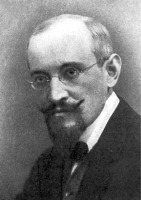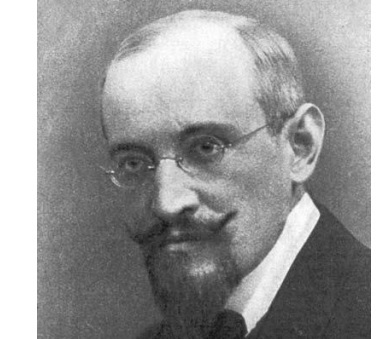Upper Silesia is located on the Oder River’s upper course, north of the Eastern Sudetes Mountain range and the Moravian Gate. Upper Silesia had a boundary with Greater Poland to the north and Lower Silesian territories to the west. Currently, the territory is divided into a bigger Polish half and a smaller Czech Silesian section, which is situated within the Czech regions of Moravia-Silesia and Olomouc. 2023 was the 175th anniversary of Rudolph Virchow’s Upper Silesia Discovery of one of history’s most devastating epidemic typhus [1–4]. Epidemic typhus, sometimes called louse-borne typhus, is a type of typhus. This disease has triggered fears and despair, generating widespread outbreaks after wars and natural calamities, and disrupting normal societal functioning [5, 6]. Typhus is an infrequent illness that primarily affects communities experiencing unsanitary and severely overcrowded conditions. Rickettsia prowazekii is the causal agent transmitted by the human body louse (Pediculus humanus corporis). It was discovered by Henrique da Rocha Lima (1879–-1956), a Brazilian pathologist and microbiologist from Rio de Janeiro, Brazil. He and his companion, Stanislaus von Prowazek, documented the pathogen responsible for epidemic typhus, which would eventually be named Rickettsia prowazekii. Da Rocha Lima designated the organism with the name of his colleague Stanislaus Josef Mathias von Prowazek (Figure 1), who succumbed following his infection, and American bacteriologist Howard Taylor Ricketts (1871–1910) [7].
Figure 1
Stanislaus Josef Mathias von Prowazek (1875–1915), Edler von Lanow, born Stanislav Provázek, was a Czech zoologist and parasitologist. Together with the pathologist Henrique da Rocha Lima (1879–1956), he discovered the pathogen responsible for epidemic typhus. The photograph of Dr. Prowazek was apparently made on January 1, 1915 (https://commons.wikimedia.org/wiki/File:Prowazek.JPG; https://upload.wikimedia.org/wikipedia/commons/5/58/Prowazek.JPG; Attribution: Anonymous Unknown author, Public domain, via Wikimedia Commons)

Prowazek’s ancestry can be traced back to Czech peasants [8]. In 1893, his father, who served as an officer in the Austro-Hungarian army, was granted a noble title. Prowazek commenced his natural science investigations 2 years later at the University of Prague. Prowazek was exposed to the teachings of the biologist Berthold Hatschek and the physicist and philosopher Ernst Mach, and these teachings were enduring and crucial for his future meticulous works. Subsequently, he pursued further education under Hatschek’s guidance at the University of Vienna, Austria. In 1899, he obtained his Ph.D. with a dissertation on Protozoa. He persisted in his zoological research alongside Hatschek in Vienna and at the zoological laboratory in Trieste until 1901. After this date, Prowazek decided to reposition to Frankfurt at the Paul Ehrlich’s Institute for Experimental Therapy in Hesse, Germany. Later, he conducted research in Munich, Bavaria, Germany, where he crystallized the cellular architecture of flagellates. In 1903, he agreed to Fritz Schaudinn’s request to serve as his assistant in the zoological department of the University of Berlin, Germany. The alliance between Prowazek and Schaudinn played a crucial role in shaping his career. This period was prolific because of his advances in the field of protistology, which is a discipline addressing the the detailed investigation of protists. Protists are a highly diverse group of eukaryotic, mostly unicellular microorganisms.
In 1905, after Schaudinn and Hoffmann discovered the spirochete responsible for syphilis, Schaudinn was appointed as the director of the section for zoological studies at the Institut für Schiffs- und Tropenkrankheiten in Hamburg, Germany. Schaudinn died early the following year at thirty-five, and Prowazek was chosen as his replacement. Prowazek participated in Neisser’s 1906 expedition to Java, which is one of the Greater Sunda Islands. Java lies between Sumatra and Bali and remains an idyllic place. It is still a vividly active economic center in Indonesia. In Batavia (now Jakarta), which was the capital of the Dutch East Indies, he and Ludwig Halberstädter identified the inclusions found in the eyes’ epithelial cells of patients with trachoma. These inclusions are now known as Prowazek’s bodies or Halberstädter-Prowazek’s bodies. Later, he became interested with vaccinia. In 1908, he traveled to Brazil to research the origins of vaccinia and variola at the Instituto Oswaldo Cruz in Rio de Janeiro. Two years later, he stayed at the German colonies of Western Samoa, Yap, and Saipan to investigate the underlying factors contributing to various infectious diseases, including trachoma, fowl pox, silkworm jaundice, and molluscum contagiosum, among others. During a severe typhus outbreak, Prowazek visited Serbia and Constantinople (Byzantium, Istambul) in 1913 and 1914, respectively. In 1915, Prowazek and Henrique da Rocha Lima were dispatched to investigate a typhus epidemic in Russia. Da Rocha Lima and Prowazek became infected with the disease simultaneously, but the Brazilian colleague subsequently recovered. Da Rocha Lima separated the microorganism responsible for the disease and named the bacterium Rickettsia prowazekii as a tribute to Prowazek and Howard Taylor Ricketts.
Prowazek, in his concise but intense scientific career, studied diverse subjects and personally conducted numerous transplantation experiments on Protista, making significant contributions to the fields of protistology and its medical applications. Despite his lack of formal medical education, Prowazek had a substantial understanding of medical issues and acquired impressive expertise in chemistry and physics. His predecessors’ enduring legacy and teaching modeled and helped him overcome several difficulties in his short life. Like other luminaries, Prowazek had a broad range of interests and a deep fascination for the tropical region and developed a strong affinity and preference for indigenous and poorly served communities, focusing on botanical, zoological, and ethnographic aspects from several remote areas of the earth.
Rudolf Virchow (1821–1902) was a prominent figure in pathology and public health during the nineteenth century [1]. He formulated theories regarding cellular pathology, actively participated in the Berlin barricades during the year 1848, held a prominent position as a liberal politician, was engaged in a political struggle against Bismarck to secure a liberal constitution, researched the anthropology of the Veddas of Ceylon and German schoolchildren, and collaborated with Schliemann in archaeological excavations at Troy, an ancient Turkish city corresponding to an old layer of Hisarlik chronologically between 1300 and 950 BCE. The Prussian government commissioned Virchow to investigate the typhus outbreak in Upper Silesia during 1847–1848. Virchow’s beliefs on social medicine were shaped by his observations of the victims and their poverty during his medical activities. Despite his failure to control the outbreak, his extensive 190-page report on the Typhus outbreak in Upper Silesia in 1848 proved pivotal in German public health. On March 10, 1848, he arrived back in Berlin, and within just 8 days, a revolution erupted against the government, in which he actively participated. In July of that year, he was crucial in establishing “Die Medizinische Reform” (Medical Reform), a weekly publication advocating social medicine and addressing political injustice [1, 4]. In his multifaceted and scientifically titanic nature, Virchow voiced opposition against antisemitism vehemently long before the Nazis approached the Reichstag. Virchow’s battle against antisemitism was remarkable, following the discovery of the conditions of the Jewish people, who were enslaved, emarginated, and scorned by all nations over centuries [1, 9].
Prowazek and Virchow were cultured individuals who could write and efficiently work on several topics and were both very sensitive to suffering communities. We think their legacy for Clinical Microbiology, Clinical Pathology, and Public Health is an enduring task for Medicine and the World.
Conflict of interest
The author is an associate editor of Archives of Medical Science. The article has been peer-reviewed. The author is responsible for the material and the text of this article. Affiliated institutions had no role in study design, data collection, analysis, decision to publish, or manuscript preparation. The author declares that receives royalties from Springer and NOVA Publishers. All royalties go to pediatric charities.



